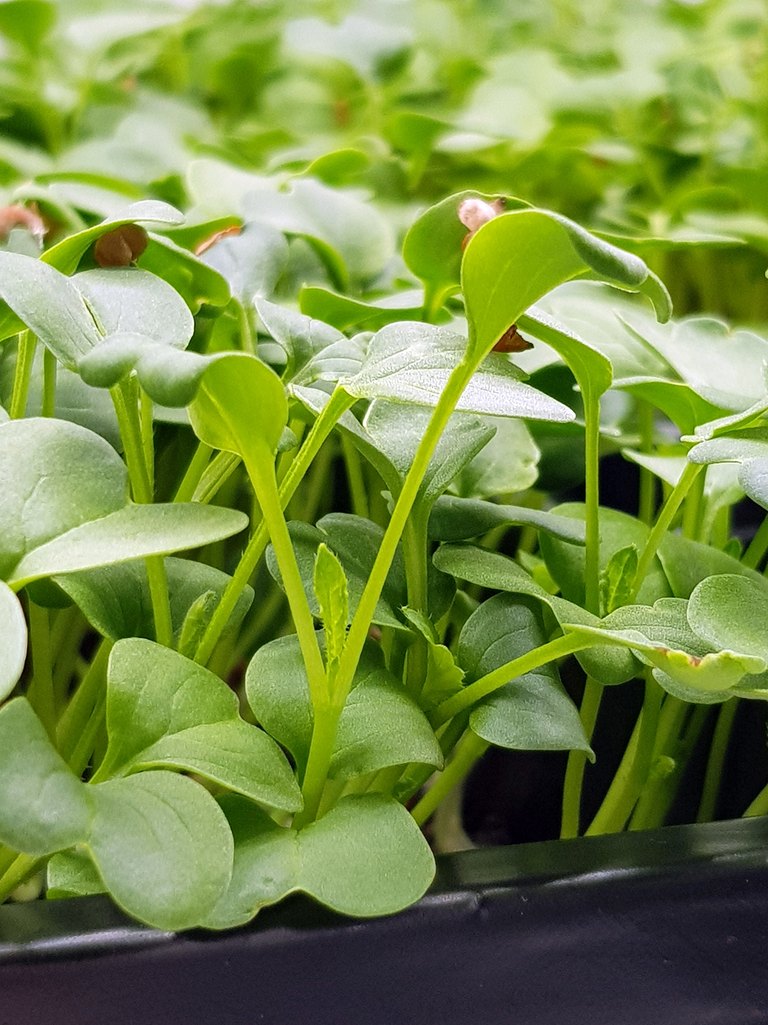Safety and quality
Under their new name "microgreens", plant seedlings, formerly called sprouts, are booming again. Due to their low growth height and short cultivation periods, MG are particularly well suited for cultivation in so-called vertical farming systems. Vertical farming refers to the cultivation of plants using the height/vertical, e. g. on several layers on top of each other. Cultivation conditions (especially temperature, humidity, CO2 content, light) are usually very well controlled. Due to diverse sensory properties as well as their - compared to the corresponding "adult" products - high concentrations of micronutrients and bioactive substances, the popularity of microgreens among consumers has been increasing for several years. However, much research is still needed regarding their quality and safety.
The Institute for Safety and Quality of Fruit and Vegetables is therefore investigating, among other things, the influence of commercial growing media (peat, coco soil, coconut fiber and hemp fiber mat) on the microbiological and ingredient quality and safety of microgreens from the cruciferous family (Brassicaceae), such as radish and broccoli microgreens.
Officially recognized methods for the determination of the microbiological quality and safety of fresh plant products are used. The ingredient quality and safety of the microgreens are investigated using quantitative methods for the determination of vitamins and other bioactive substances. On the other hand, the ingredient profiles of the microgreens are comprehensively characterized by means of metabolome analyses (GC×GC-MS and LC-MS).
Further work by the Max Rubner-Institute will be devoted to the quality and safety of commercial microgreens samples produced in vertical farming facilities and other growing systems.


